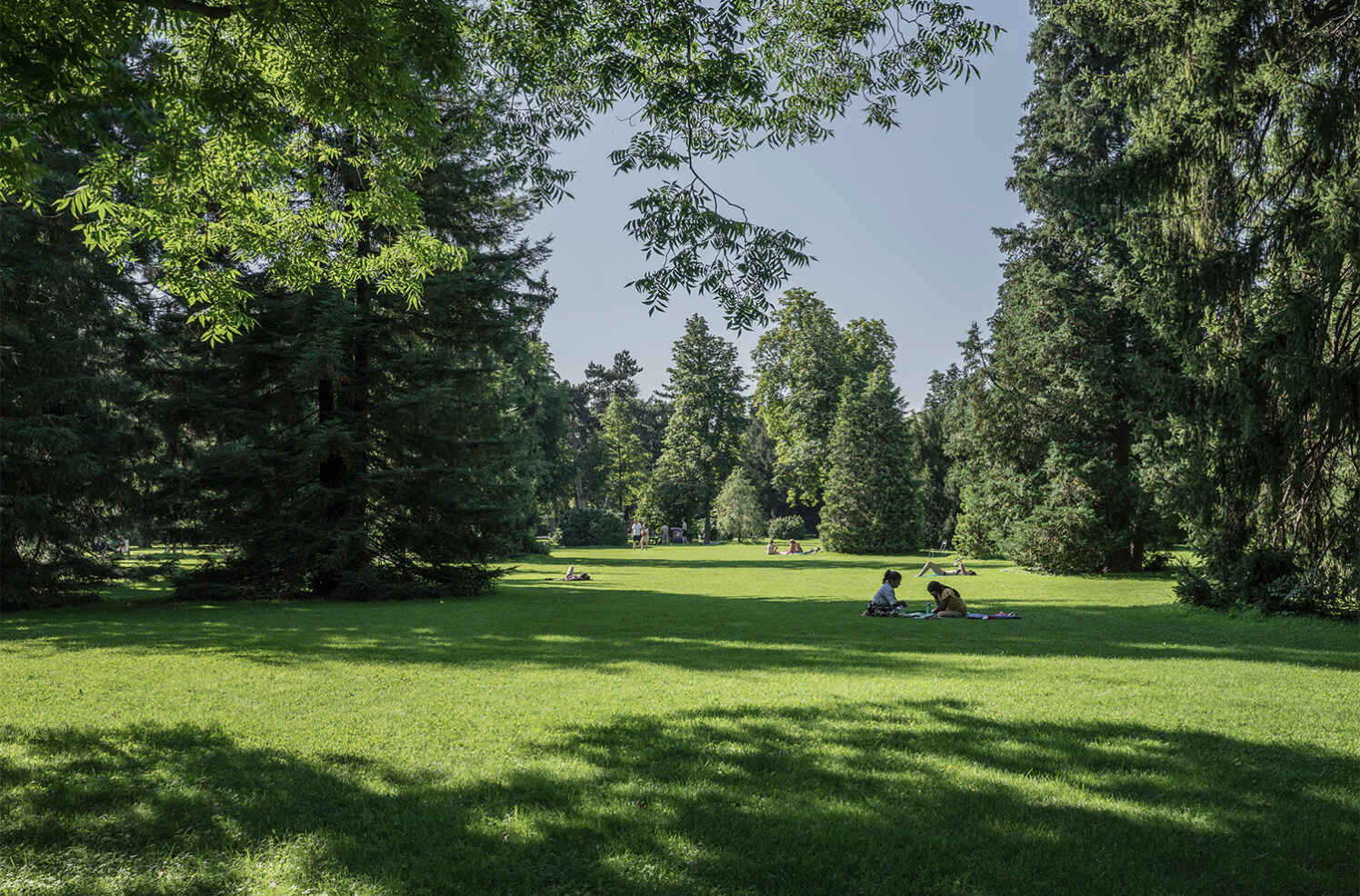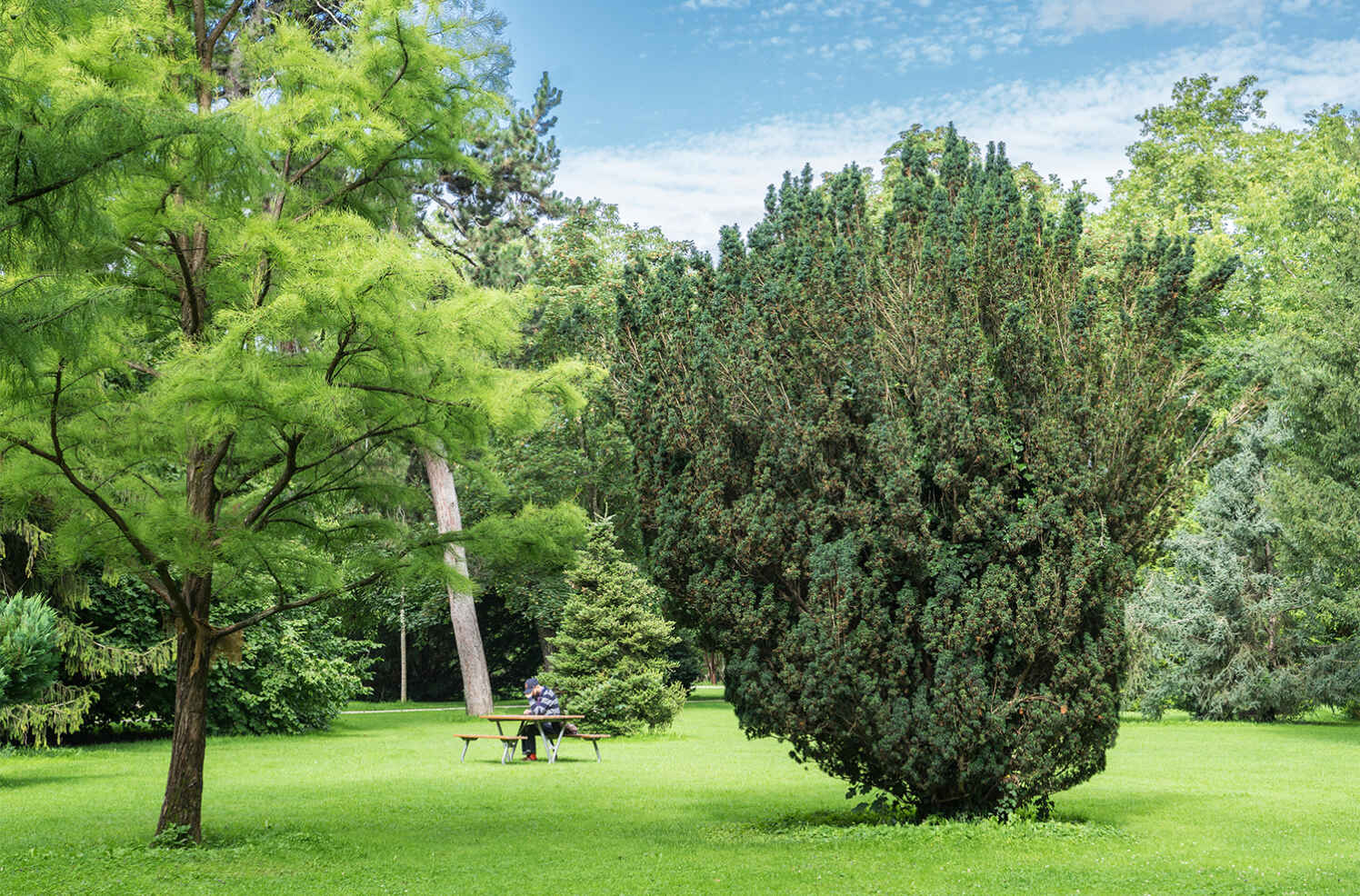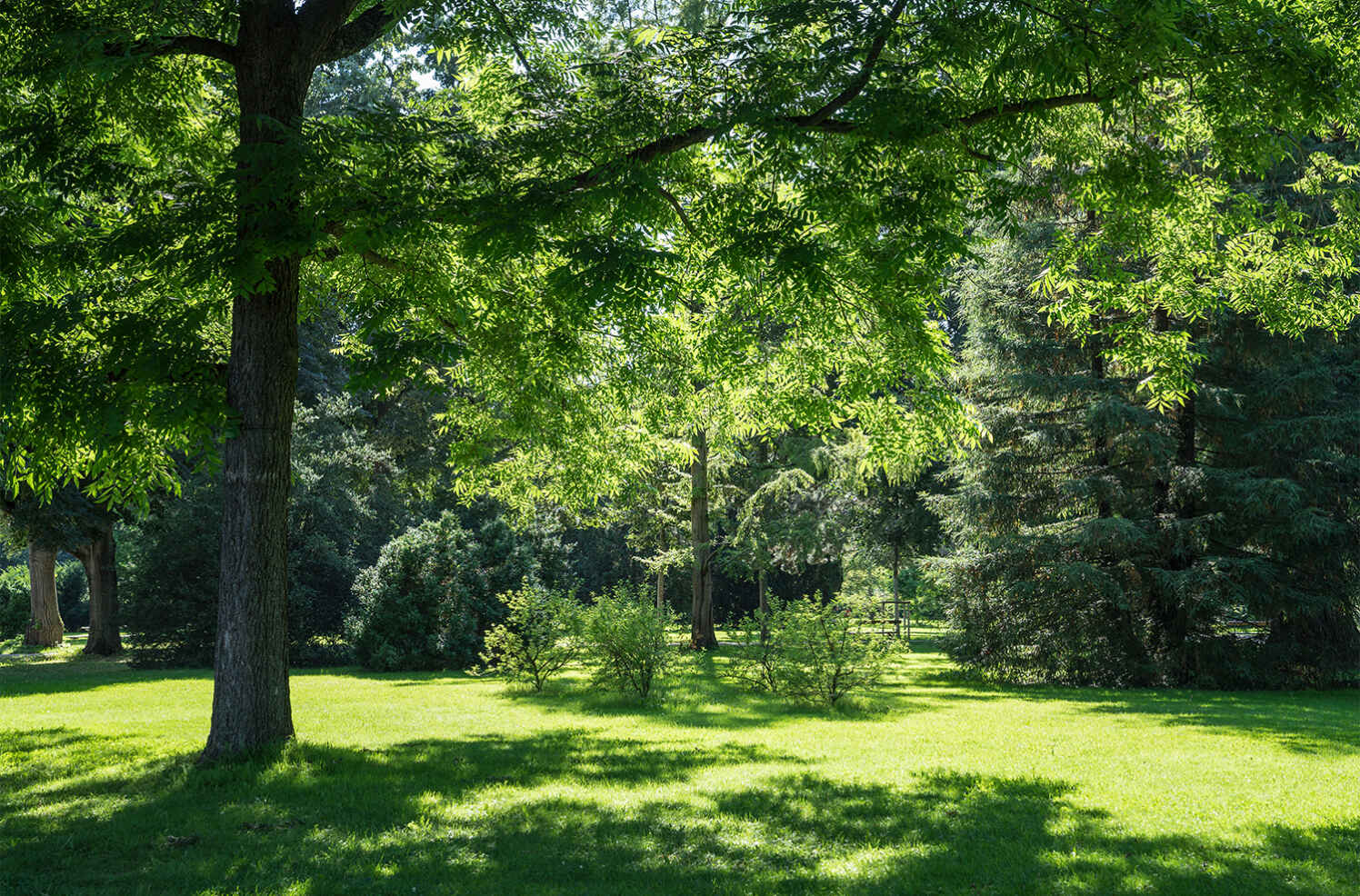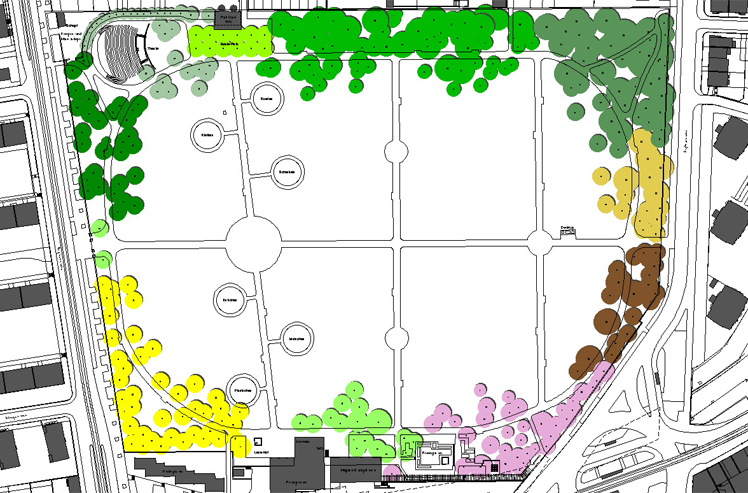





















Current landscape architecture – 150 years old
Its history provides Kannenfeldpark with a unique tree population in an unusual structure. Used as a cemetery from 1870 to 1950, the grounds were converted into a park in 1951. Gravestones and borders disappeared; the planting remained. Today, the small conifers have grown into impressive sculptures that stand freely in the central lawn fields and create spaces of unique atmosphere.
The historical paths and the tree population still form the basic structure of the park today. What is new, however, are the spaces, their references and contents: Fontana Landscape Architecture’s concept peeled out themes with potential from the hodgepodge of elements from different times. It radically reduced, renovated, created new perspectives, new depth and found answers to the growing pressure of use. Where necessary, it added new elements: for example, the new circular path that today provides access to all subspaces, many of which were previously inaccessible.
The outer frame of the open park centre, the tree frame, is an arboretum that has been supplemented and grouped according to botanical families. The foundation stone for this was laid by the city’s horticultural department, which planted surplus deciduous tree rarities from other parks in Kannenfeldpark for decades. But it was not until the 2004 parc concept by Fontana that the collection of rarities became a design theme and a park space in its own right.
Along the western access axis, new play facilities are located between the old conifers in the open park centre: Five circular play islands that replace the outdated play equipment. The robust concrete circles in the lawn are designed for changeability: They provide a strong, formally uniform, yet flexible in use interchangeable framework for a wide range of activities.
The park is 150 years old and yet current landscape architecture. It would never have been designed like this at the time of its creation – and no landscape architect would design it like this today. The examination of the site has opened up the thematic fields that Fontana Landscape Architecture has combined to create a new image: an impossible park. Today it is Basel’s most popular park. But no matter how busy it is – you can retreat here, find or lose yourself, be alone or bathe in the crowd a few metres away.
Awards
Best of Swiss Landscape Architecture 2022 , 2.8.22
Chronicle News
Anthos Yearbook No. 2 is here – and we’re part of it , 02.08.2022
Fontana at the first Architekturwoche Basel and at Open House Basel , 16.05.2022
New Play Islands in Basel’s Kannenfeldpark , 10.04.2018
A Tree Trip Around the World in Kannenfeldpark , 06.04.2018
Postcard Landscapes , 07.12.2017
Fontana Renews the Rose Garden in Kannenfeldpark Basel , 09.08.2017
Regenerating Basel’s Kannenfeldpark , 24.02.2017
Amors Gärten, Ein lustvoller Spaziergang durch die schönsten Schweizer Pärke , 10.08.2014
Guided tour in the Kannenfeld Park , 06.09.2012
Neue Bäume für den Kannenfeldpark , 01.04.2011
Publications
Anthos Yearbook 2022 , 2022
Tree Guide – A Tree Trip Around the World in Kannenfeldpark , 2018
Atlas of World Landscape Architecture , 2014
150 Jahre Grün – Jubiläumsbuch der Stadtgärtnerei Basel , 2012
Gehölzführer- Ein bäumiger Rundgang durch den Kannenfeldpark , 2011
Basel – ein Begleiter zu neuer Landschaftsarchitektur , 2010